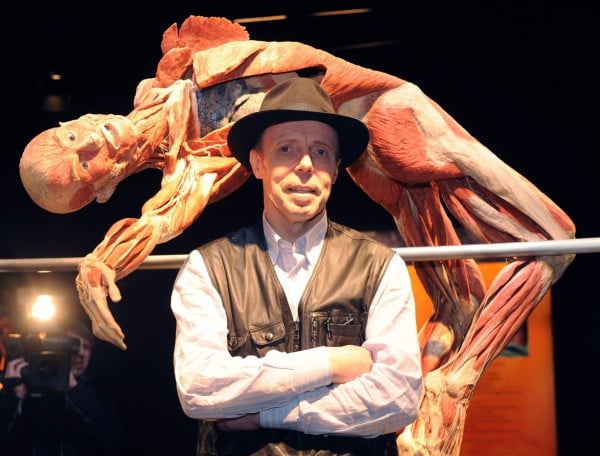Medicine, Technology, and Art
Unit 4: Medicine, Technology, and Art
Pattriana Perry
I never thought about the connections between medicine, technology, and art. However, Professor Vesna brought up the parallel between the three fields. She said that in order for artists to draw the body they must first understand its anatomy and movements. As a matter of fact, artists used to help doctors illustrate the human body until X-Rays were invented. Wilhelm Rontgen, the founding father of X-Rays, is one of the first pioneers who saw the potential between the collaboration of technology and medicine: he was able to figure out a way to examine the body without cutting it open. Nowadays, the procedure has become such a standardized routine that almost every hospital on the planet takes advantage of its function; patients with any damages to their bones or ligaments do not have to second guess their injuries. I remember when I was eight years old; I fell off the monkey bars and landed on my right elbow. It started to swell up and the doctors were not sure if I broke or sprained it. But once I got an X-ray, they could confirm that my bones were cracked and hanging off by a thread (almost broken). The doctors came up with a treatment almost immediately.
Another fascinating intersection between medicine and art is Body Worlds. It is an exhibition created by anatomist Gunther Von Hagens who was determined to showcase the correlation between human anatomy and art by preserving human bodies and body parts "... using a technique called to reveal inner anatomical structures" (https://www.youtube.com/watch?time_continue=418&v=Ep0M2bOM9Tk). In my eyes, Hagens was also an artist. His goal was to create a "Museum of Man" and permanently display the bodies. He even agreed to have his own body plastinated for the Body of Worlds tour.
On a separate note, I really enjoyed Diane Gromala's Ted Talk on her use of medicine and art. Being an athlete myself, I am no stranger to injuries, and just like Gromala, I have tried every treatment and every medicine there is to better my recovery. When she talks about how virtual reality treatment can be just as effective as opioids I was in shock. I actually own virtuality reality goggles myself, but I only use it to play games. I like her invention of turning the virtual reality treatment into a meditation practice, and I am excited because I want to try it out. All in all, I am glad art can help and guide the progression of medicine and technology.
References
Pattriana Perry
 |
| X-Ray |
I never thought about the connections between medicine, technology, and art. However, Professor Vesna brought up the parallel between the three fields. She said that in order for artists to draw the body they must first understand its anatomy and movements. As a matter of fact, artists used to help doctors illustrate the human body until X-Rays were invented. Wilhelm Rontgen, the founding father of X-Rays, is one of the first pioneers who saw the potential between the collaboration of technology and medicine: he was able to figure out a way to examine the body without cutting it open. Nowadays, the procedure has become such a standardized routine that almost every hospital on the planet takes advantage of its function; patients with any damages to their bones or ligaments do not have to second guess their injuries. I remember when I was eight years old; I fell off the monkey bars and landed on my right elbow. It started to swell up and the doctors were not sure if I broke or sprained it. But once I got an X-ray, they could confirm that my bones were cracked and hanging off by a thread (almost broken). The doctors came up with a treatment almost immediately.
 |
| Gunther Hagens and his art |
 |
| Diane Gromala and Virtual Reality |
References
Gromala, Diane, perf. Curative Powers of Wet, Raw Beauty. 2011. Video. 26 Oct 2012. <http://www.youtube.com/watch?feature=player_embedded&v=cRdarMz–Pw>.
Neuendorf, Henri. “'Dr. Death' Gunther Von Hagens Opens Corpse Museum in Berlin.” Artnet News, Artnet News, 18 Feb. 2015, news.artnet.com/exhibitions/dr-death-gunther-von-hagens-opens-corpse-museum-in-berlin-258648.
“Simon Fraser UniversityEngaging the World.” Diane Gromala - School of Interactive Arts and Technology - Simon Fraser University, www.sfu.ca/siat/about/siat_spotlight/DianeGromala.html.
Vesna, Victoria. “Http://www.youtube.com/v/Ep0M2bOM9Tk.” Lecture. Medicine pt1 . Youtube, 21 Apr. 2012. Web. 25 Oct. 2012. <http://www.youtube.com/watch?v=Ep0M2bOM9Tk>.
Vesna, Victoria. “Http://www.youtube.com/v/psjnQarHOqQ.” Lecture. Medicine pt2 . Youtube, 21 Apr. 2012. Web. 25 Oct. 2012. <http://www.youtube.com/watch?v=psjnQarHOqQ>.
“X-Rays.” MedlinePlus, U.S. National Library of Medicine, 25 Apr. 2018, medlineplus.gov/xrays.html.

Hi,
ReplyDeleteI really liked your blog post! You did a good job summarizing some of the main points of this week's lecture, such as the connection between medicine, technology, and art. I also liked how you incorporated your own experience of having an X-Ray test done to check your arm. It really drives the point that medicine, technology, and art coming together can really help people.